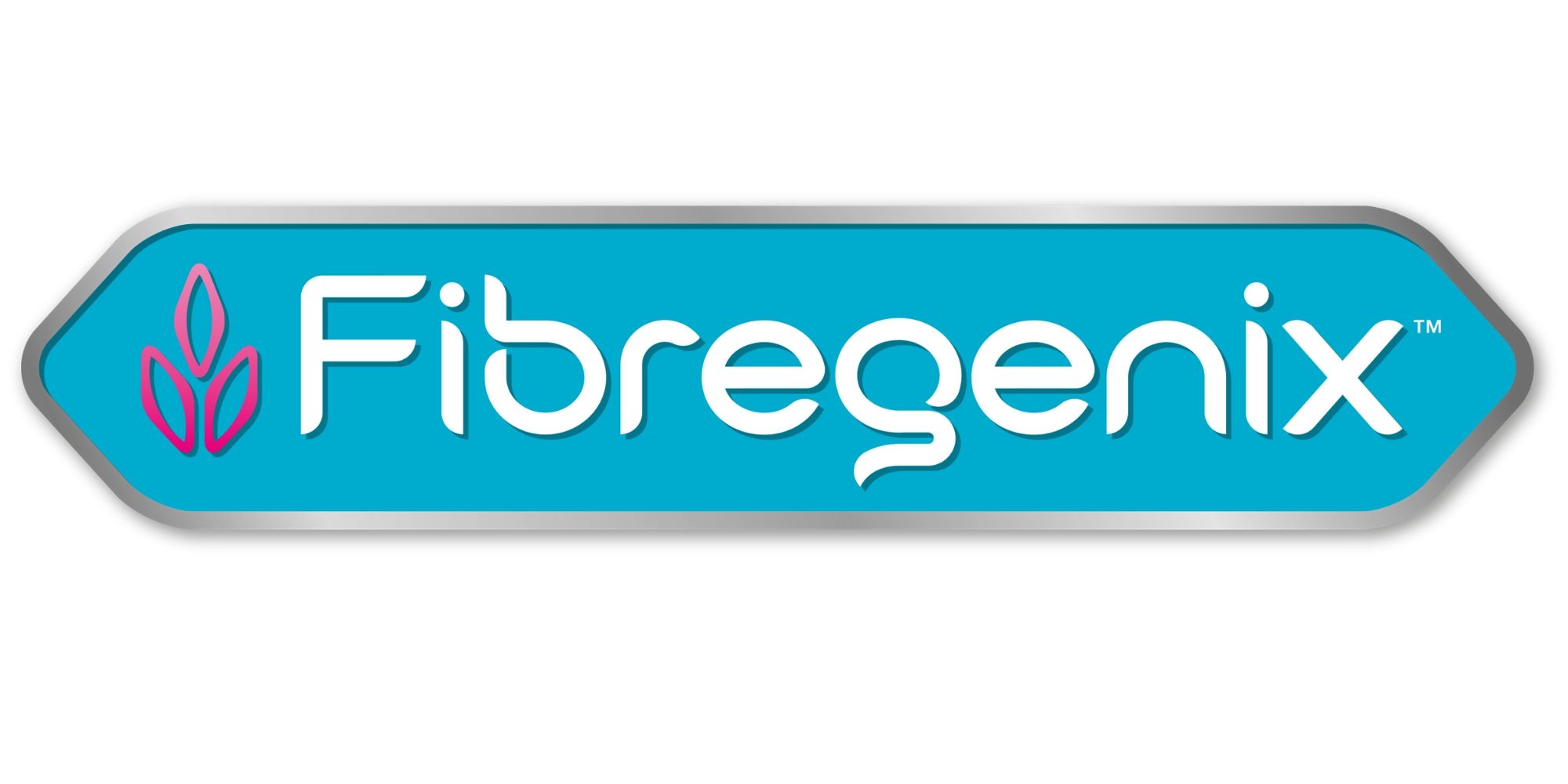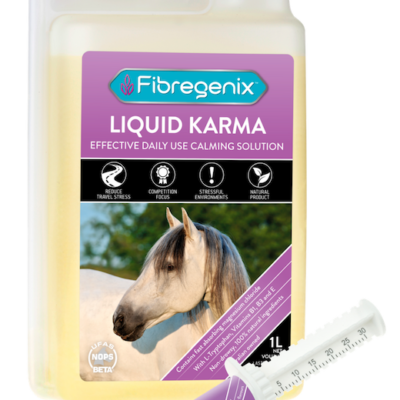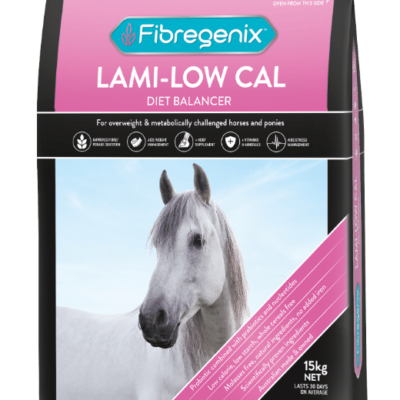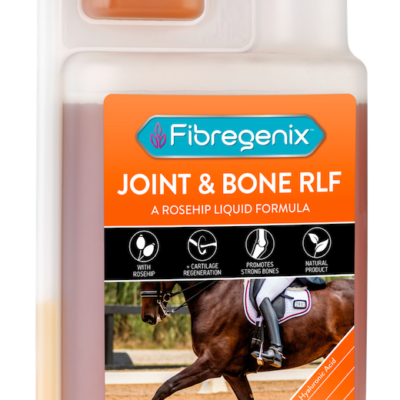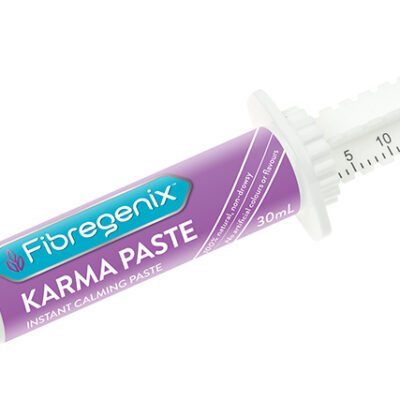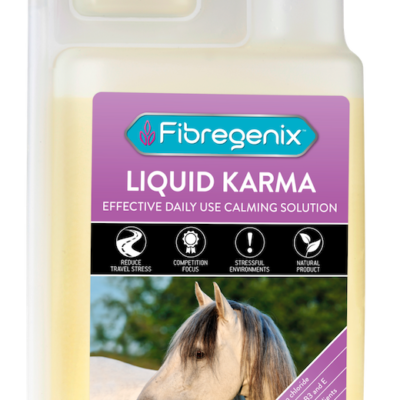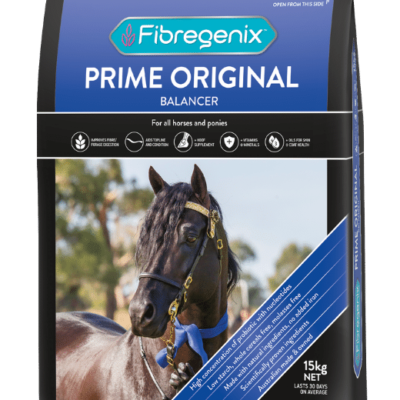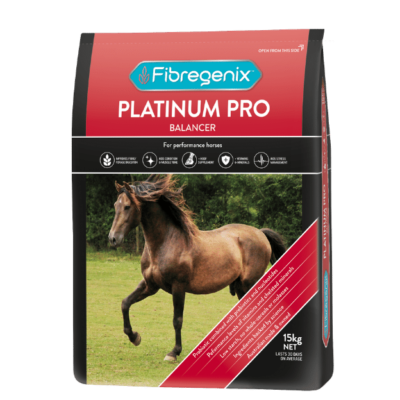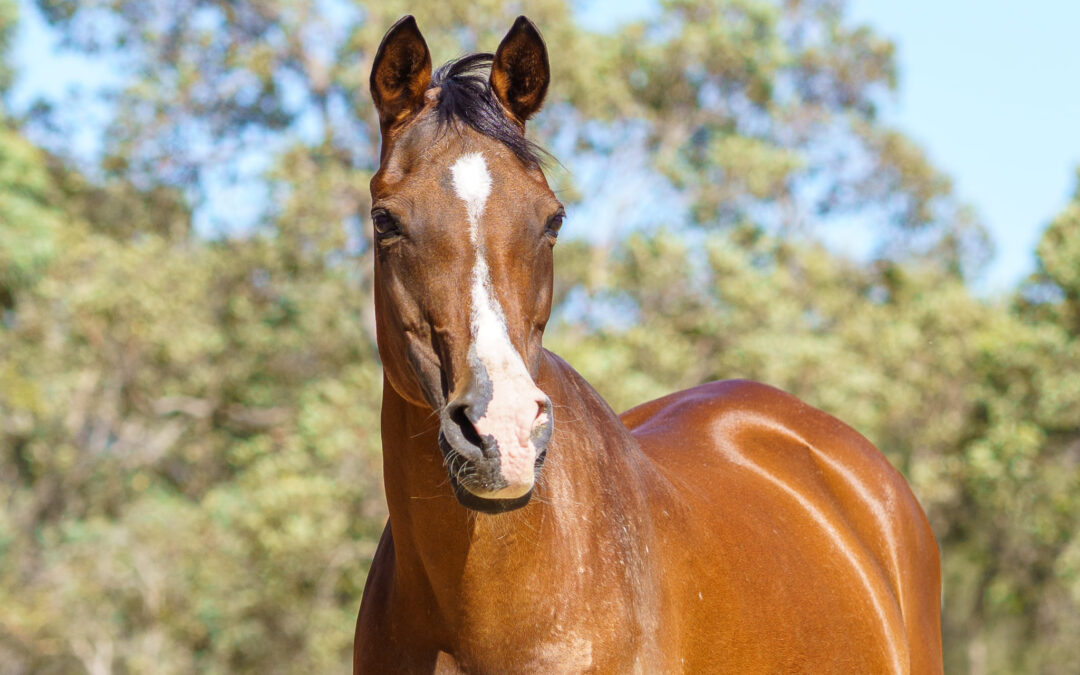
May 10, 2022 | General feeding practices
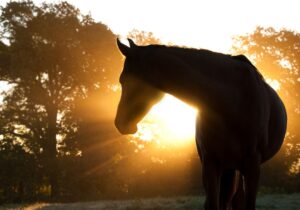 What are Feed Balancers?
What are Feed Balancers?
Feed balancers, or ration balancers as they are sometimes referred to, are a versatile approach to feeding horses. Yet despite their usefulness, there is still so much misunderstanding of this type of horse feed product. Whilst they might look like just another pelleted feed, they will provide that extra ‘punch’ to any feeding programme. We all want our horses to look and feel their very best with a happy outlook on life. So, keeping their diets as close to nature as possible ie mostly forage, is the best way to achieve this.
So What Are Fibregenix Feed Balancers?
A Fibregenix balancer may initially seem like any other vitamin/mineral supplement for your horse. However, it provides every daily essential nutrient necessary in a low-intake, low energy, highly concentrated source. And not just vitamins and minerals. Added extras such as protein, fatty acids and digestive aids to promote a healthy gut and improve feed utilisation are also included. This makes a Fibregenix Feed Balancer the ultimate ‘all in one’ feed additive product.
These balancers are designed for when additional calories are not required. And they’re fed in much smaller amounts than standard hard feeds. Usually 100g per 100kg bodyweight (500 grams for a 500kg horse). Your standard 50-100g of a vitamin and mineral supplement just can’t match the functionality provided by a genuine feed balancer.
So when, why and how would I feed a Fibregenix Balancer?
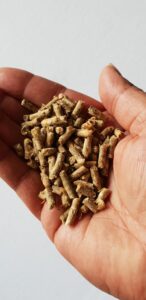
Fibregenix pellets
Fibregenix Feed Balancers can be used in the following ways:
Fed alone as a low-calorie source of protein, vitamins, and minerals to balance forage.
Depending on forage quality, your horse should be able to get all his daily essential nutrients from pasture or hay. However, it’s widely recognised that modern forage and pasture is frequently deficient in minerals and other nutrients. Forage analysis can help you pinpoint exactly what is lacking. This is when a balancer is a great way to counteract these deficiencies. Furthermore, feeding the recommended daily amount of a balancer means no additional vitamin or mineral supplement should be required.
Fed alongside ‘Straights’.
Some owners prefer to incorporate ‘straights’ such as lupins, oats, barley etc alongside beet pulp, chaff, oil etc. Whilst great ingredients, they can leave a diet unbalanced in some specific areas such as macro minerals. So, a balancer is ideal for this type of feeding programme. The main components of the feed provide the calories. And the balancer is added to ‘fill in the nutritional gaps’ of these ingredients, supplying amino acids, vitamins and minerals and essential fatty acids.
Feeding less than recommended?
Concentrated balancers really come into their own if you need to feed less than the recommended quantities of a hard feed. Eg a performance muesli or pellet. Maybe you’re cutting back your horse’s feed to keep weight down or to avoid hot behaviour. In this way, balancers are ideal, providing essential nutrients for health and performance without additional energy (calories) or starch. They also give you the option of feeding smaller amounts of a lower energy hard feed. Then you can top up the nutrient, (but not energy) levels, to meet the increased demands of work or competition.
Many modern horse breeds maintain weight on limited calories, even when asked to perform hard work. Because of the concentrated nature and low feeding rate, a feed balancer can meet the protein, vitamin, and mineral needs. And it does this without adding excessive calories or starch to the diet. Even those on stable rest/convalescing benefit from a source of essential nutrients without the calories, provided by a balancer.
Added Extras in Balancers:
Whilst feed balancers are a modern and cost-effective approach to feeding horses, you need to do your research. Not all balancers are created equal and a genuine balancer should be:
- Ideally free from whole cereal and molasses.
- A specialist tailored range catering for different categories of horses and ponies rather than a ‘one balancer suits all’ approach.
- High in functionality with special digestive enhancers eg nucleotides and equine approved probiotics and prebiotics. These are key to ensuring digestive health and maximising nutrient yield from forage.
Busting 6 myths on Fibregenix balancer supplements
Myth 1 Fibregenix balancers provide calories for weight gain.
Fact: Generally, any balancer will provide low levels of calories when fed at the recommended amount, regardless of the manufacturer. The term ‘conditioning’ is generally used in association with high-calorie products aimed at weight gain. However, the live yeast probiotic additive in Fibregenix balancers has been shown to double fibre digestion and utilisation. Keep in mind though, a balancer won’t be a substitute for the additional feed poor doers may need to gain/maintain weight. But it will work alongside your horse’s fibre, helping him make more out of it. And this, in turn, can actually help with weight gain.
Myth 2 Fibregenix balancers are expensive to feed.
Fact: With a high price tag compared to a bag of standard hard feed, a Fibregenix balancer may seem like a costly investment. However, they are polar opposites to a standard hard feed. And, due to the low feeding rate (typically 500g a day for a 500kg horse), they’re actually a very cost-effective way to ensure a balanced diet. Depending on pack size, a bag of Fibregenix will typically last 30 days for a 500kg horse and costs less than $3 per day to feed. For smaller ponies it becomes even more economical.
Myth 3 Forage is enough for many horses.
Fact: Hmmm, if only! Yes, in the perfect world where grass grows on the most perfect nutrient rich soils which remain so all year round. Whatever the season. Reality check: For sure, forage can easily meet or even exceed energy (calorie) requirements for many horses. However, these days, forage-only diets are unlikely to provide a balanced supply of vitamins, minerals and quality protein. Lysine, for example, is one of the most important essential amino acids that horses need in their diet every day. And frustratingly, it’s typically low in forage. Average hay is also unlikely to meet maintenance requirements, especially if fed at minimum rations for those on restricted diets.
Hay can also contain negligible levels of vitamin E. This important antioxidant plays a key role in supporting muscle health and immunity. While vitamin E levels in fresh grazing are typically high, other nutrients like copper, selenium and zinc are typically low. Vitamin A is another essential nutrient and the content of beta carotene (the precursor for vitamin A) diminishes the longer hay is stored for. In fact, after 6 months, it can be almost negligible.
Additionally, during the curing process, hay will lose all its Omega 3 and 6 essential fatty acids which are naturally present in grass.
Myth 4 A Fibregenix balancer will make my horse excitable.
Fact: No, it won’t. Diet can generally affect behaviour in one of two ways. By oversupplying energy or by providing high levels of starch and/or sugar. Low feeding rates means our balancers provide a negligible level of energy, starch and sugar when fed at the recommended amount. This makes them an ideal choice for excitable horses and ponies that maintain weight easily (or gain too easily!) on forage alone.
Myth 5 A Fibregenix balancer will give my laidback horse more energy.
Fact: Unfortunately, the idea of finding a feedstuff that’s high in energy, but low in calories really is too good to be true. Fibregenix balancer supplements aren’t energy providers. Low starch and sugar means they contain low levels of energy/calories when fed at the recommended rate. This makes them ideal for good doers. If your horse lacks energy, it may also be that he lacks fitness for his work.
Myth 6 There’s no difference between a Fibregenix balancer and a broad-spectrum vitamin and mineral supplement.
Fact: Unlike broad-spectrum vitamin and mineral supplements, Fibregenix balancers also supply digestible protein. This provides key amino acids such as lysine and methionine. Then we’ve added essential Omega 3 & 6 fatty acids and hoof improvement nutrients along with vitamins and chelate minerals. Each balancer also contains our high-powered live probiotic yeast and purified nucleotides. And for the harder working horse we also added a gut health package of MOS & FOS prebiotics.
Take Home Message:
The beauty of a Fibregenix balancer is the flexibility provided in customising the nutritional management of individual horses. The key is to keep your horse’s diet as simple as possible whilst satisfying nutritional demands even for working horses. Ultimately, this means more emphasis on fibre feeding as the healthiest approach.
Oh and below is Sophie Taiki’s stunning boy who really benefitted from getting on to Platinum Pro.
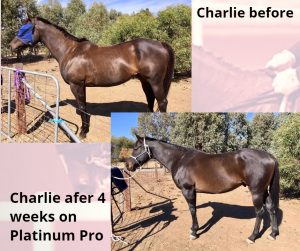
Tango Charlie fed on Fibregenix Platinum Pro
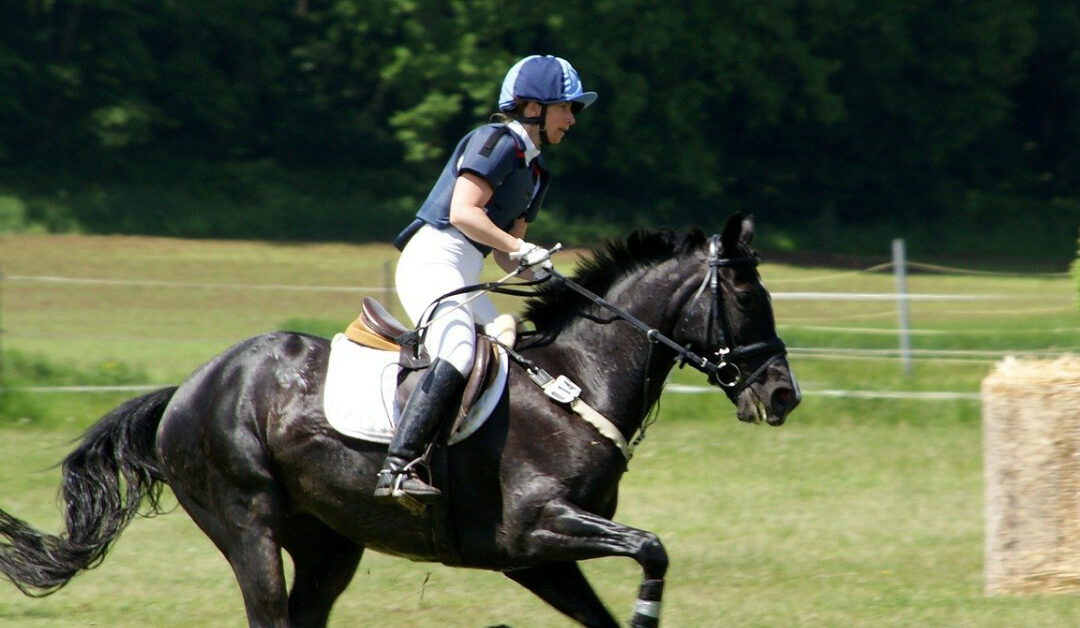
Mar 7, 2022 | Feeding for different activities

5* Event Horse
FEEDING THE EVENTING HORSE
Feeding the eventing horse with the correct nutrition is paramount so he can perform to the best of his ability. 3-day eventing is the ultimate all-round test of a horse’s athletic capabilities. Therefore your event horse needs to possess athleticism, concentration, agility and stamina.
Top Tips for Feeding the Eventing Horse
- Don’t overfeed – Feed your event horse specifically for his level of work or competition and continually re-assess to ensure he is getting everything he needs to be successful.
- Feed a minimum of 1.5-2% of total bodyweight in fibre eg ad lib forage over a 24hr period.
- Ensure your event horse receives a good quality source of protein. This aids muscle development and repair when training and competing at an event, just don’t overfeed protein.
- Don’t forget to provide electrolytes to replace the ions lost through the sweat.
- Turn out for some time during the day at home and days off after events is vital. It’s essential for the mental wellbeing of your event horse and has been shown to help reduce/prevent gastric ulcer issues.
Recommended Fibregenix Products For Feeding the Eventing Horse
Beginners
- Fibregenix Prime Original is the perfect feed balancer for event horses up to Pre-novice level. It contains the optimum level of vitamins, minerals and nutrients required for an event horse to cope with competition demands. And it will help to build strength and stamina.
- Fibregenix Prime Original contains a high level of an equine approved live probiotic yeast. It increases fibre digestion, aids nutrient yield, and encourages the beneficial bacteria in the gut to thrive. Feeding Fibregenix Prime Original alongside ad lib forage means you should be able to reduce the amount of additional hard feed fed. This benefits the event horse’s digestive system and potentially reduces feed bills.
The Advanced Event Horse
- Fibregenix Platinum Pro is ideal to feed when work becomes more demanding. It incorporates a blood building formula of nutrients including B12, iron and folic acid. We’ve also added a MOS and FOS prebiotic and an elevated specification of vitamins, minerals and nutrients. The inclusion of a purified nucleotide supplement provides additional performance benefits to your equine athlete. All these key ingredients help support your eventer when travelling and competing at a higher level.
- TIP: Continue to feed Fibregenix Platinum Pro if your event horse needs a period of stable rest. This will help maintain muscle tone and condition, reducing the length of time taken to bring him back into full work.
Joint Protection
- An event horse needs suppleness as well as joint and bone protection. Your event horse will be faced with the high impact of jumping over fences during show-jumping. And he will be racing at speed during the cross-country phase. Fibregenix’s Liquid Joint & Bone formulation will aid your event horse by protecting and conditioning the joints ensuring optimum flexibility. It incorporates a rosehip extract Rosa Canina, Hyaluronic acid (HLA), Organic MSM and Glucosamine HCL. There’s also the added benefit of calcium chelate and vitamin D3 providing bone density and strength.
For The Spooky Event Horse
- Many event horses, being hot-blooded TBs, can become quite spooky and excitable in the competition environment. This is far from ideal when it’s time for your horse to perform. For better concentration and a calmer temperament, give your event horse Fibregenix Liquid Karma. This amazing product contains a superior, water-soluble form of magnesium that can be quickly absorbed into the blood stream. This means your eventer will be calmer much quicker, helping him to focus on the job at hand.
Nov 17, 2021 | Horse health
You know, I get asked ALOT of questions…some very legit, some that are off the scale. So, to save you some valuable research time, I’ve rounded up some of the most common questions I get asked with a simple, straightforward fact-based answer.
Let’s get started…
Can I feed my horse all his feed in one meal? – it’ll come to about 2kg, 3kg, 4kg etc NO
A horse’s stomach is small (around the size of an AFL ball) Don’t exceed a total of 1.6 – 1.8kg per feed for a horse and 1.4 – 1.6kg for a pony (including additional chaff or sugar beet, if fed)
Adding more to it, even fibre, is risking overloading the stomach and feed flowing on into the intestine before it has been properly digested in the stomach. At best this is a waste of feed, at worst it can cause problems when it reaches the hindgut.
Is it worth feeding chaff? YES
Chaff slows down the rate of consumption of starchy meals and being a fibre feed, promotes chewing which encourages the production of saliva.
Is it better to soak beet pulp? YES
Beet pulp products such as Speedi-Beet can soak up to at least seven times its own weight of water. Nutritionally, it’s chock full of hindgut friendly fibres and is a great method of getting extra water into your horse.
Can I feed less hard feed than it says on the bag to save providing too much starch and sugar? YES
That and avoiding turning your horse into a landwhale or going crazy on sugar overload are the most common reasons 99% of people aren’t feeding the recommended daily serves.
But will this make him miss out on protein and other nutrients? YES
Unfortunately, bagged hard feeds contain relatively small amounts of vitamins, minerals and other nutrients per kilo of feed. Remember, the premix containing these added nutrients is the most costly part of any fortified feed. That’s why the recommended levels are supposed to enable the horse to get his full balanced ration of essential nutrients without resorting to additional supplements.
My horse looks great on his current diet should I still supplement him? NO
If it ain’t broke – why fix it?
Will Biotin on its own improve my horse’s hooves? NO
Sorry to disappoint, but no one nutrient will improve hoof quality or growth.
So I need to feed other specific nutrients which alongside biotin will improve them? YES
Biotin is just one part of the hoof improvement puzzle. It needs to be combined with other nutrients eg zinc, copper and essential amino acids ie lysine and methionine for the best effect. Oh, and add in a large tablespoon of patience too…
Can I feed a bran mash once a week? NO
Whilst this was once common, it’s now considered “bad practice” as it means a sudden change of diet. And remember, changes should ideally be made gradually to avoid upsetting the sensitive bacterial population of the horse’s hindgut. Even a “regular” change, eg a bran mash once a week, is enough to upset the bacterial balance and means the horse’s digestive efficiency is compromised.
So, is there any point in feeding bran? NO
Modern wheat bran is now missing much of the fibre and wheat germ for which it was once valued. Adding it to an already balanced diet will unbalance that diet as well as upsetting the calcium:phosporous ratio. This can compromise bone tissue formation and integrity – something which is particularly risky for growing youngstock.
Can I give my horse some extra carbs eg oats/barley/maize the night before my big competition event to give him a bit more energy? NO
Don’t even think about it! Remember, avoid a sudden change of diet. (Unless your saddle bronc rodeo skills are on par). Changes should ideally be made gradually to avoid disrupting the sensitive bacterial population of the horse’s hindgut.
Will too much protein make my horse hot? NO
In most cases, it’s the energy content (MJ / kg) of what you’re feeding and not the protein content. The source of the energy may also have some influence, i.e. ‘quick release’ energy from cereal starch or ‘slow release’ energy from fibre or oil. You’ll notice that most hard feeds that are rich in protein are also higher in energy. So, in most cases, the ‘fizz factor’ is as a result of a miss-match between the amount of energy fed (MJ) and that needed for daily life, rather than the amount of protein in the diet.
Should I cut my horse’s feed down if he isn’t being worked even if it’s just for a few days? YES
If your saddle bronc skills haven’t improved significantly, then cutting down is a good idea. Eliminate hard feeds first and then you can reassess other high energy feed sources.
Can I still give my horse a cereal-based feed if he’s ulcer prone? NO
Unfortunately, grain-based feeds are highly acidic – remember what got your horse there in the first place. So limit the intake to less than 1g per kg of body weight per meal or preferably no grain-based feed at all.
Can I still feed Cereal hay if he’s ulcer prone? NO Just think about it…
Will my horse be able to put condition on when he has ulcers? NO
Generally, horses with active ulcers will exhibit very picky feeding and will limit their feed intake accordingly to avoid digestive discomfort. Having said that, some horses are more stoic than others and I’ve come across horses that still ate well and looked well despite having EGUS.
Can I feed my ulcer prone competition horse lupins then for energy instead of cereals? YES
Could my horse’s hot/fizzy behaviour be as a result of poor digestive health? YES
If only people realised just how sensitive the horse’s digestive system is. ANY time there’s the slightest change in PH eg from sudden changes in the diet or being deprived without feed for many hours, it’s going to impact your horse’s digestive health and his temperament. It’s just one of those annoying things about our equine friends…
Can I feed oil for energy to my ulcer prone horse instead of cereals? YES
Oils are benign and won’t cause an acid spike. They’re also slow release and the majority of horses tolerate and can get energy from additional oil in the diet. Just go slow introducing it…
Should I provide some sort of joint supplement now that my young horse has started his showjumping/dressage/eventing etc career? YES
Even though he’s young and doesn’t have any current joint issues? YEP
The second we start working our young horses whether it’s lunge work or sitting on them, we’re impacting the joints. Many growth plates don’t close until maturity which is often at around 6 years old, so it makes sense to ensure they get some protection and nutrient support to keep joints and bones healthy.
Should I ask my local stockfeed supplier or vet for feed advice? NO
Ok, here’s the deal. Bear in mind that your local produce supplier may be wanting to sell you the latest and greatest that the rep persuaded him to buy. Not all of them have the depth of knowledge required to offer sound advice. And while we’re at it, unless a vet has diversified into nutrition, know that that in 6 years of studying, a vet will spend only a few weeks on this topic. I’ve seen some VERY questionable advice being dished out by vets.
Should I go on to a social media nutrition advice forum and ask about my horse’s diet? NO
In fact, make that a supersized NO! Why not I hear you ask? Because it’s pointless, confusing, and you can bet that what works for someone else’s horse won’t work for yours. After all, if you have a dental problem, you don’t go to your local GP do you?
So, if you have a nutrition question you want answering… Call me, Anita, on 040 892 0707 or email me at: anita@fibregenix.com.au
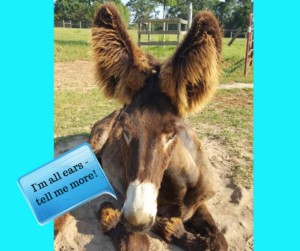
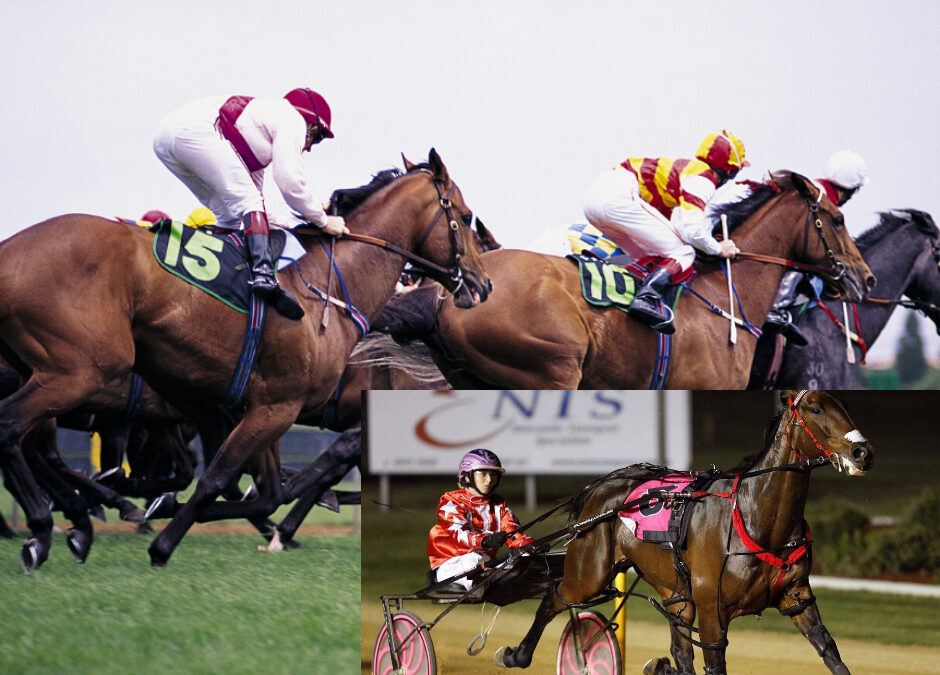
Sep 16, 2021 | Digestive health, Feeding for different activities
FEEDING RACEHORSES
When it comes to feeding racehorses, their nutritional requirements fall in the extreme category level of feeding.
Such a high exertional effort requires plenty of fast release energy of the type supplied by a carbohydrate rich diet. Unfortunately, with most trainers adhering to a ‘traditional’ system, the resulting dietary practices conflict with the digestive physiology of horses. The inappropriate concentrate/forage ratio levels fall way outside the parameters for the horse’s natural diet of fibre and trickle feeding. The result is digestive disorders which can affect performance, immune health and behaviour. In fact, gastric and hindgut ulcers are the most common problems with any athlete horse fed high levels of starch.
However, attitudes are gradually changing, and many forward-thinking trainers are starting to look for more suitable alternatives. More importantly, they are understanding the benefits that feeding more fibre to their racehorses can bring.
CAN A FEED BALANCER SUPPLEMENT BE A BENEFICIAL ADDITION WHEN FEEDING RACEHORSES?
Recently, feed balancers are also fast becoming a part of that innovative change. This is due to their level of nutrients and the digestive benefits they can provide. Fibregenix Platinum Pro is a nutrient dense feed balancer supplement that can help improve your racehorse’s performance. And ultimately, it can result in an increased strike rate.
This technically advanced feed balancer is designed specifically for the fit performance horse. Its unique formulation delivers the optimum balance and level of each nutrient with a synergistic effect promoting optimum health and performance.
WHAT DOES PLATINUM PRO PROVIDE:
- quality digestible protein supplying all essential amino acids
- an enhanced and comprehensive vitamin and chelated mineral package
- nutrients to promote blood building ie iron, organic copper, vitamin B12 and folic acid to assist in haemoglobin formulation
- a powerful combination of antioxidants to promote a healthy immune system
- beneficial levels of key nutrients for hoof health
- high oil content
- a quadruple action digestive and gut health package
Fibregenix Platinum Pro is also invaluable for the preparation of yearling sales. Transitioning from grass to a high starch diet all too often results in scouring or ulcers. However, the comprehensive gut health package in Platinum Pro can help reduce the risk of digestive upsets from such exposure. The result is a happier, healthier yearling with great muscle tone and condition giving you a better return on your investment.
WHAT DOES THE DIGESTIVE AND GUT HEALTH PACKAGE COMPRISE OF?
LIVE YEAST PROBIOTIC
The quadruple action digestive package includes a specific equine-approved live yeast probiotic. This probiotic aids the improvement in the breakdown of fibre so it is utilised more efficiently. Actisaf live yeast probiotic has been proven in studies to reduce lactic acid accumulation and maintain a more stable PH. Additionally, it can help to prevent common problems such as colic and gastric and hindgut ulcers induced by hindgut acidosis. The result of lactic acid accumulation.
PREBIOTICS
Fibregenix Platinum Pro also includes two prebiotics – PROFEED FOS and Safmannan MOS.
OVERVIEW OF PROFEED FOS
This specific FOS is made up of short chain fructo-oligosaccharides, providing a feed-source for the beneficial micro-organisms in the gut. A daily starch intake of more than 2% body weight/day increases the amount of starch reaching the hindgut. This can have a negative effect on the microbial fibrolytic activity, affect fibre degradation, and lead to digestive disorders.
KEY BENEFITS:
PROFEED® helps to limit the risk of digestive disorders in adult horses and yearlings. It does this by modifying the faecal microbiota by increasing Lactobacilli/E. coli ratio and limiting growth of potentially pathogenic bacteria.
Mode of Action & Proven scientific support:
Numerous reports, trials and now dossiers to support the use of Profeed, which may:
- Positively modify the gut microflora
- Enhance digestive health
- Reduce the risk of digestive upsets
- Aid in the reduction of putrefactive compound production
- Strengthen the immune system (GALT)
- Improve insulin sensitivity in the obese horse
OVERVIEW OF SAFMANNAN MOS
Safmannan MOS is a premium pure saccharomyces cerevisiae yeast fraction rich in mannan-oligosaccharides (MOS) and β-glucans. Derived from primary inactivated yeast, it supports a healthy immune system and may increase its reaction capacity.
With the digestive system already compromised through the stress of racing and travelling, there can be a large population of ‘bad’ gut bacteria. And this occurs despite the presence of thriving beneficial bacteria. An unhealthy gut environment negatively affects the general health of the horse. So Safmannan MOS prebiotic attracts these harmful bacteria and prevents them from binding to on the gut wall. Once bound to the MOS, they cannot be released so they are rendered useless and ‘flushed out’ of the digestive system.
Key benefits:
- It helps to improve gut health by ensuring a better capacity to absorb nutrients and cope with challenging environmental conditions.
- Increases zootechnical performances including average daily gain and feed efficiency especially in challenging conditions. For example pathogen pressure or heat stress.
- Enhances immunoglobulin production during gestation. This improves the quality of the colostrum and the transfer of immunity from the mother to its offspring at birth.
Mode of action:
MOS binds a broad spectrum of major pathogens (eg E.coli, Salmonella) thanks to its high content in mannanoligosaccharides. It does this by reducing their attachment onto the intestinal mucus and also provides the following benefits:
- Helps to raise animal natural self-defences
- Enhances humoral immune responses under challenging conditions
- Improves cell-mediated immune response to disease
- Protects the villi and maintains gut integrity whilst strengthening the intestinal barrier.
PURIFIED NUCLEOTIDES
Fibregenix Platinum Pro contains a blend of purified nucleotides. These essential nutrients support muscle recovery and tissue regeneration after strenuous exercise. They also help support red blood cell production, which assists oxygen delivery to muscles and aids nutrient uptake.
Independent scientific trials* on thoroughbred racehorses proved that the benefits of nucleotides to high performance horses include
- improved oxygen consumption, improved recovery rates, improved carbon dioxide production
- reduced levels of stress hormones
- reduced levels of lactic acid
* Nucleotide supplementation trial on exercising thoroughbreds at the University in Liege (Belgium) Dr T. Art and Prof P. Lekeux – ref Vet Res (1994) 25, 361-370
PROFEED Research and Study References:
Treiber, K.H., et al., Insulin resistance and compensation in Thoroughbred weanlings adapted to high-glycemic meals. Journal of Animal Science, 2005. 83: p. 2357-2364.
Respondek, F., et al., Effects of short chain fructooligosaccharides on the microbial and biochemical profi les of different segments of the gastrointestinal tract of horses. Pferdeheilkunde, 2007. 22(2/2007): p. 146-150.
Berg, E.L., et al., Fructooligosaccharides supplementation in the yearling horse: Effects on fecal pH, microbial content, and volatile fatty acid concentrations. Journal of Animal Science, 2005. 83(7): p. 1549-1553.
Faivre, L., et al., Changes in intestinal microbiota activity and immune response in horses submitted to scFOS supplementation followed by EHV1-EHV4 vaccination. Submitted in Equine Veterinary Journal.
TAKE HOME MESSAGE:
Fibregenix Platinum Pro is a premium quality nutrient dense balancer supplement specially formulated for high bioavailability. It’s fed in very small quantities (100 grams per 100 kilograms of bodyweight). Crucially, this means that once a racehorse has been on Fibregenix for a while it may be possible to reduce hard feed which is more beneficial to the horse’s digestive system.
TRAINER TESTIMONIAL: Another winner! Since using Fibregenix these past few months we have had more wins and places than ever. Recently, Amber Mamba ran 1st a couple weeks ago – Ridinghood Fame ran 3rd today. Glad I convinced my hubby (Bill Spencer) to switch to Fibregenix.

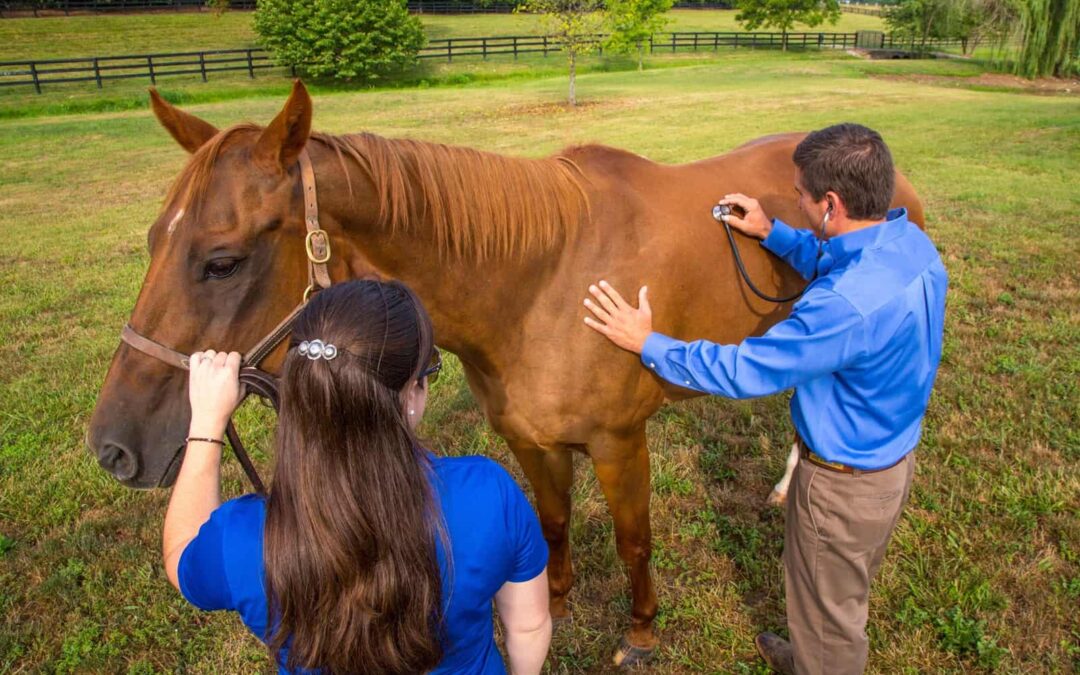
Sep 3, 2021 | Digestive health
Hindgut Ulcers – Your Ultimate Guide
Preventing and managing hindgut ulcers is becoming an all-too-common scenario. What was once thought to be fiction has rapidly become more of a fact. Particularly as research into this area of digestion has evolved. With a positive diagnosis, it’s easy to feel as if your world has come crashing down. However, with the help of this ultimate guide, find out how to manage this problem and get your horse back to feeling healthy and happy.
When we talk about the horse’s hindgut, we’re referring to the digestive area from the cecum to the rectum. The primary function of the hindgut is to digest fibre and convert it into useable energy from volatile fatty acids. High levels of this fermentative microbial digestion take place in the caecum by microorganisms, yeast, and friendly bacteria. 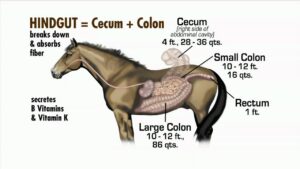
The normal acidity (PH) level in the hindgut is around 6.2. When the acidity in the hindgut is raised it lowers the pH. Lactate-producing and lactate-utilizing bacteria (bugs that cause issues) get strong in an environment with a low pH. They then start producing lactic acid rather than volatile fatty acids. This change in the microbial populations and acid profiles is what creates hindgut acidosis.
What causes this change to occur?
It’s caused by large quantities of undigested simple carbohydrates reaching the hindgut and producing lactic acid. These are usually starches and sugars found in processed grain feeds or rich pasture. This drop-in pH may reduce mucous production, leaving the mucous membranes of the hindgut vulnerable.
Furthermore, when fiber-digesting bacteria die off because of hindgut acidosis, endotoxins are released into the bloodstream. The result of this can cause issues such as laminitis.
What are Hindgut Ulcers?
- Hindgut ulcers are also known as colonic ulcers and are often referred to by vets as Right Dorsal Colitis (RDC). This is because most hindgut ulcers occur in this part of the large intestine on the right side of the horse.
- All ages and breeds of horses are susceptible. Hindgut ulcers have been reported to affect 44 – 63% of horses and are estimated to occur in 65% of sport horses. These types of ulcers can go undiagnosed for months because horses are usually normal between acute episodes.
- When hindgut health is compromised, a horse may also have trouble absorbing important nutrients. This can result in poor coat and hoof condition, reduced immune function, and behavioural changes.
- Whilst hindgut ulcers are less common than gastric ulcers, a horse can have both at the same time.
A definitive diagnosis is difficult because a gastroscope (used to diagnose gastric ulcers) won’t reach the colon.
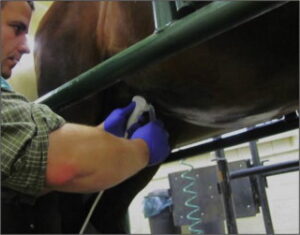
However, one definitive method of diagnosis is a Transabdominal ultrasound. This type of ultrasound takes specialized equipment and skill on the part of the vet. If the ultrasound shows a thickened colonic wall, hindgut ulcers are likely to be diagnosed. If you’re concerned about hindgut acidity, ask your vet to test faecal pH first.
Symptoms:
Horses affected by hindgut ulcers may experience a progression of signs such as
- decreased performance, lethargy
- weight/topline loss
- reduced appetite
- diarrhea, intermittent soft manure, or “squirty” bum where some horses have a liquid component that follows passing otherwise normal manure
- mild intermittent or recurring colic
- a rough coat
- a change in attitude, sudden girthiness
- sensitivity in the flank area
- difficulty bending, collecting and extending
- blood in the manure
- chewing wood (cribbing)
- swelling (oedema) along the central midline of the belly
Why do Horses get Hindgut Ulcers?
- Stress for horses can be either physical (i.e. training and performance) and/or emotional stress (i.e. separation anxiety, floating). This leaves them at a higher risk for developing both gastric and hindgut ulcers. Additionally, stress, whether physical or mental, affects the horseʼs immune system.
- Hindgut acidosis. Usually, but not always, caused by starch overload or massive doses of pure fructan and insufficient forage. Horses with hindgut acidosis often have frequent low-grade colic, loose manure, and are off their feed.
- Overuse of non-steroidal anti-inflammatory drugs (NSAIDs). These should be used for no longer than 5-7 consecutive days. Overuse can lead to damage to mucosal membranes of the gut lining and interfere with blood clotting.
- Parasites including tapeworm, small strongyles, and others. These may also cause ulcers at the site where they attach to the intestinal wall.
- Disturbances to the gut microbiome. Eg excess levels of lactic acid are caused by a decrease in the pH level of the colon. This acidic environment may result in:
- Damage to the mucosal lining, resulting in compromised intestinal barrier function.
- Changes in the equine microbiome eg a proliferation of pathogenic bacteria and a decrease in the population of beneficial bacteria.
- Reduced defences against toxins in the gastrointestinal tract.
BE AWARE OF OTHER CONDITIONS that could look like RDC. These include
- Gastric ulcers
- Other causes of colic (large colon displacement and/or impaction)
- Infectious causes of diarrhea (Salmonellosis, Clostridium)
- Inflammatory bowel disease
- Cancer
Three Steps in the Prevention and Treatment of Hindgut Ulcers
Dietary management that prevents hindgut ulcers from recurring and to support the healing of the intestinal lining.
- Your vet may prescribe medications such as sucralfate or misoprostol.
- Reduce the amount of work the colon must do by limiting long fibre (hay) consumption. Replace it with short fibre eg hay cubes, pellets, or chopped hay.
- Offer small, frequent meals whenever possible to support gut health and improve nutrient absorption.
- Try feeding Psyllium. It can help lubricate and shorten the transit time for feed and roughage. It also increases water content in the intestines and fatty acid concentration in the colon and reduces inflammation.
- Feed to provide buffering to the hindgut i.e. beet pulp, soyhull husks
Minimizing stress is an important part of recovery from Right Dorsal Colitis. This can be done by:
- Reducing strenuous exercise or training
- Providing more turnout time
- Minimalising transport
By following as many of the above strategies, you can usually see a reduction in symptoms after 1-2 weeks. However, be aware that it can take two to three months for ulcers to fully heal.
Improve digestive health. Probiotics and prebiotics can be helpful.
Can Fibregenix Platinum Pro performance balancer help with hindgut ulcers?
Yes! Platinum Pro is invaluable in the management of hindgut ulcers. It includes 4 specific digestive aids. Actisaf Live yeast probiotic, purified nucleotides, MOS, and FOS prebiotics will tackle each of the points listed below. Each of these digestive aids has proven performance when it comes to gut health.
- For increasing the number of “good” bacteria and restoring gut health in horses with hindgut ulcers.
- To improve feed efficiency and support nutrient assimilation
- Supporting hindgut function and fibre fermentation
- Assisting in the combat of toxins by inhibiting their absorption from the gut
- Supporting the immune system by increasing immunoglobulin activity
Dietary Nucleotides are of particular interest. Here are 2 reasons why we’ve included them in our balancers for preventing and managing hindgut ulcers.
Dietary Nucleotides Improve Efficiency of Cell Growth and Repair
In general, DNA is synthesized through complicated de novo pathways. These pathways create fresh nucleotides from scratch rather than using existing material. However, in the presence of dietary nucleotides, the body can down-regulate DNA synthesis. And instead, it uses an enzyme named HGPRT to scavenge the intact nucleotides improving the efficiency of cell repair and conserving energy.
In addition to ongoing maintenance, cell division is critical for repairing damaged tissue, including ulcers. This is why in times of stress, dietary nucleotides have proven to be beneficial.
Dietary Nucleotides Increase Mucosal Thickness
Nucleotides optimize the natural protective mechanisms of the mucosal lining. This helps to maintain a healthy GI tract. Supplementing a horse’s diet with nucleotides increases mucosal thickness and protein levels through increased availability of genetic precursors. It also speeds up intestinal recovery after chronic diarrhea and intestinal damage.
Nucleotides play a critical role in the body in that they accelerate the cell regeneration process. Cell regeneration allows an animal to recover much quicker from the type of stress it is under (performance, illness, disease, injury, etc.).
TAKE HOME MESSAGE
Hindgut acidosis is a nutritional problem. You feed your horse – that makes it your problem!
Consider where your horse came from that would affect his digestion. Off-track racehorses, rescued horses, performance horses, or simply grain fed at any time in his/her life. All these will have a higher risk. In fact, any horse is at risk of hindgut acidosis from conditions that don’t support microbial digestion.
The signs of hindgut ulcers should always be taken seriously. If you suspect your horse might be affected by hindgut ulcers, get him examined by your vet as soon as possible.
In some cases, hindgut ulcers might be unavoidable. However, you can greatly reduce his chances of developing this debilitating condition. The bottom line is to limit NSAID use, minimize stress whenever possible and manage/feed your horse appropriately.

 What are Feed Balancers?
What are Feed Balancers? 

